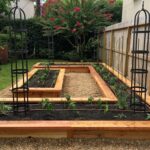Landscape design plays a crucial role in enhancing the aesthetics, functionality, and overall appeal of outdoor spaces. Whether it’s a residential backyard, a commercial property, or a public park, implementing the right landscaping ideas can make a significant difference.
From basic principles to trending styles and eco-friendly practices, there are numerous aspects to consider when it comes to landscape design. In this article, we will delve into the importance of landscape design and explore various elements that contribute to creating visually stunning and sustainable outdoor environments.
Understanding the basics of landscape design is essential for anyone looking to elevate their outdoor space. From principles like balance, proportion, unity, and focalization to elements such as plants, hardscape features, and water elements, each component plays a vital role in creating an inviting landscape. Additionally, incorporating sustainable and eco-friendly practices has become increasingly popular in landscape design, contributing not only to environmental conservation but also to long-term cost savings.
Moreover, with various types of landscaping ideas tailored for residential, commercial, and public spaces, there is no one-size-fits-all approach when it comes to designing outdoor environments. Modern trends like contemporary landscapes or traditional themes like Japanese gardens offer diverse options for enhancing outdoor areas.
For those looking for practical tips on DIY projects or considering hiring a professional landscape designer for their property transformation needs – this article will provide valuable insights into making informed decisions about landscape design.
Understanding the Basics of Landscape Design
When it comes to creating a visually appealing and functional outdoor space, understanding the key principles and elements of landscape design is essential. Whether you’re working on a residential, commercial, or public landscaping project, these basic concepts will serve as the foundation for your design.
Principles of Landscape Design
The principles of landscape design include unity, balance, proportion, focalization, transition, rhythm, and simplicity. Unity refers to the cohesive and harmonious arrangement of all elements in the landscape. Balance involves achieving visual stability through the distribution of elements. Proportion relates to the size relationships between different components in the landscape.
Focalization directs attention to a specific area or feature. Transition creates a smooth flow between different parts of the landscape. Rhythm adds interest through repetition, while simplicity avoids overcrowding and excessive ornamentation.
Elements of Landscape Design
The elements of landscape design encompass line, form, texture, color, and scale. Line dictates the movement and direction in the landscape. Form refers to the shape and structure of individual components such as plants and hardscaping.
Texture influences the tactile quality of surfaces within the landscape. Color brings life and vibrancy to outdoor spaces while scale ensures that all elements are appropriately sized in relation to each other. Understanding how these principles and elements work together is crucial for creating a well-designed landscape that meets both aesthetic and functional goals.
Incorporating these principles and elements into your landscaping ideas can help you achieve a balanced, dynamic, and visually appealing outdoor space that complements your property’s architecture or natural surroundings with style and harmony.
Types of Landscaping Ideas
When it comes to landscaping ideas and landscape design, one size does not fit all. The type of space being landscaped-whether it’s a residential property, commercial location, or public space-will greatly influence the design choices and considerations. Each type of space has its own unique needs and challenges when it comes to landscaping, requiring different approaches and techniques to achieve the desired results.
For residential properties, landscaping ideas often focus on creating an outdoor oasis that complements the architecture of the home and provides a comfortable and functional outdoor living space. This may include features such as patios, walkways, water features, garden beds, and privacy screens. Attention is paid to creating a cohesive design that enhances curb appeal while also catering to the needs and preferences of the homeowners.
In commercial settings, landscaping ideas are often geared towards creating a professional and welcoming atmosphere for employees, customers, and visitors alike. This may involve incorporating green spaces, seating areas, and low-maintenance plants to create an inviting outdoor environment. In addition, considerations for easy maintenance and sustainability are important factors in commercial landscape design.
Public spaces such as parks, plazas, and streetscapes require landscaping ideas that not only enhance the aesthetic appeal but also prioritize functionality and accessibility. These spaces need to be designed with consideration for foot traffic flow patterns, safety features such as lighting and visibility, as well as durable plantings that can withstand heavy use by the public.
No matter the type of space being landscaped, it’s essential to consider the specific needs and requirements unique to each setting in order to create a successful landscape design that meets both aesthetic and practical goals. Whether tackling a DIY project or hiring a professional landscape designer for assistance, understanding these differences will help ensure a successful outcome.
Incorporating Sustainable and Eco-Friendly Practices in Landscape Design
When it comes to landscape design, incorporating sustainable and eco-friendly practices is not only beneficial for the environment, but it can also create a healthier and more cost-effective outdoor space. Whether you are working on a residential, commercial, or public landscaping project, there are several practices and elements that you can integrate into your design to make it more environmentally friendly.
Here are some sustainable and eco-friendly practices to consider when planning your landscape design:
- Proper Water Management: Implementing efficient irrigation systems, rain gardens, and water-conserving plants can help reduce water usage and minimize runoff.
- Native Plant Selection: Choosing native plants over non-native species can support local ecosystems, conserve water, and require less maintenance.
- Composting: Incorporating a composting system into your landscape design can help recycle organic materials, improve soil health, and reduce the need for chemical fertilizers.
- Use of Recycled Materials: Opting for recycled materials such as reclaimed wood, plastic lumber, or composite decking for hardscaping elements can minimize environmental impact.
- Energy-Efficient Lighting: Utilizing LED lighting fixtures with timers or solar-powered options can reduce energy consumption and lower utility costs.
By implementing these sustainable practices in your landscape design projects, you can reduce environmental impact while creating beautiful and functional outdoor spaces that are in harmony with nature.
Overall, embracing sustainable and eco-friendly practices in landscape design not only contributes to a greener environment but also adds value to the property. Whether you choose to implement these practices on your own or hire a professional landscape designer who specializes in sustainability, the long-term benefits are undeniable. By making conscious decisions about plant selection, material use, water management, and energy efficiency, you can create an aesthetically pleasing landscape that stands the test of time.
Trending Landscape Design Styles and Themes
When it comes to creating a visually appealing and functional outdoor space, trending landscape design styles and themes play a crucial role. Whether you’re looking to revamp your backyard, front yard, or an entire property, incorporating the right style and theme can transform your landscape into a stunning and inviting haven. Some of the most popular landscape design styles include modern, Mediterranean, Japanese, English Garden, Tropical, Desert or Xeriscape, and Eco-friendly or Sustainable designs.
Modern landscape design focuses on clean lines, minimalistic features, and creating a sense of spaciousness through open areas. This style often incorporates elements such as concrete paving, sleek outdoor furniture, geometric shapes in plant beds or hedges to create a contemporary look. On the other hand, Mediterranean landscape design is inspired by the coastal regions of Southern Europe with its use of terracotta pots with colorful flowers, olive trees, lavender plants, and warm earthy tones throughout the space.
Japanese garden design aims to create a tranquil and serene atmosphere using natural elements like gravel pathways, rock gardens, water features like ponds or waterfalls, and carefully pruned trees and shrubs. Each of these trending landscape design styles evokes a different ambiance and visual appeal while offering unique opportunities for customization based on individual preferences.
It’s important for homeowners to consider their personal aesthetic preferences when choosing a specific theme for their landscape design. However hiring a professional landscape designer can also provide valuable insights into which style would best complement the overall architectural style of the property.
| Landscape Design Style | Description |
|---|---|
| Modern | Focused on clean lines and minimalistic features. |
| Mediterranean | Inspired by coastal regions of Southern Europe with warm earthy tones. |
| Japanese | Aims to create tranquility using natural elements like gravel pathways. |
Practical Tips for DIY Landscape Design Projects
Landscaping is an important aspect of enhancing the overall look and feel of a property. Whether it’s a residential backyard, a commercial space, or a public park, well-thought-out landscape design can make a significant difference. For those looking to take on their landscaping project, DIY landscape design can be a rewarding and cost-effective option. However, it’s essential to have a clear plan and practical tips in mind before getting started.
Setting Clear Goals and Budget
Before diving into any DIY landscape design project, it’s crucial to establish clear goals and set a realistic budget. Determine the purpose of the outdoor space – whether it’s for entertainment, relaxation, or functionality. This will help guide the design process and ensure that the final result meets your specific needs and desires. Additionally, having a budget in place will prevent overspending and help prioritize where to allocate funds for landscaping materials and plants.
Researching Design Ideas and Gathering Inspiration
Gathering inspiration from various sources such as magazines, websites, and social media can provide valuable insights into different landscaping ideas and styles. Whether you’re drawn to modern minimalistic designs or lush Mediterranean gardens, researching different options will help narrow down preferences for your DIY landscape design project. It’s also beneficial to visit local nurseries and botanical gardens to see plants in person and gain insight into what would thrive in your specific climate.
Executing the Design With Proper Planning
Once you have a clear vision for your DIY landscape design project, it’s time to put your plan into action. This may involve tasks such as grading the land, installing hardscaping elements like pathways or patios, planting trees and shrubs, or creating focal points with water features or sculptures. Proper planning is key at this stage – consider factors such as sunlight exposure, water drainage, plant spacing, and long-term maintenance requirements.
By following practical tips like setting clear goals and budgeting effectively; doing thorough research; executing with proper planning; one can ensure that their DIY landscape design project is successful.
Hiring a Professional Landscape Designer
When it comes to hiring a professional landscape designer, there are several factors to consider in order to ensure that you are getting the best possible results for your outdoor space. A good landscape designer should possess a combination of technical skills, creativity, and a deep understanding of plants and hardscaping elements. It is also important to find a designer who is able to understand and accommodate your specific needs and preferences for your landscaping project.
One key aspect to look for when hiring a landscape designer is their level of experience and expertise in the field. Ideally, you will want to work with someone who has a proven track record of successful projects and satisfied clients. Researching their portfolio and asking for references can give you insight into the quality of their work and their ability to deliver on their promises.
Furthermore, communication is also crucial when working with a professional landscape designer. You should feel comfortable discussing your ideas, preferences, and budget with them, as well as receiving regular updates on the progress of the project. A good designer will also be able to provide you with clear timelines, cost estimates, and detailed plans for the landscaping project.
In addition to these key considerations, it is also important to discuss sustainable and eco-friendly practices with a potential landscape designer if this is something that is important to you. Many designers today are well-versed in incorporating these practices into their designs, from using native plants to implementing efficient irrigation systems.
By prioritizing sustainability in your landscaping project, you can create an environmentally friendly outdoor space that can save you money on water bills while reducing its overall environmental impact.
| Considerations | Details |
|---|---|
| Experience | Look for proven track record of successful projects |
| Communication | Regular updates on project progress; clear timelines and cost estimates |
| Sustainability | Incorporating sustainable and eco-friendly practices into designs |
Case Studies
One such case study involves the renovation of a suburban backyard into a multi-level outdoor oasis. By incorporating elements such as a fire pit, water feature, and native plantings, the once underutilized space became a focal point for entertaining and relaxation. This transformation demonstrates how thoughtful landscape design can maximize the potential of any area, regardless of size or location.
Another inspiring case study showcases the revitalization of a neglected public park through sustainable landscaping practices. By implementing eco-friendly design principles such as rainwater harvesting, native plant selection, and permeable paving materials, the park not only became more visually appealing but also contributed to environmental conservation efforts. This project highlights the importance of incorporating sustainable and eco-friendly practices in landscape design to create beautiful and resilient outdoor spaces for the community to enjoy.
Through these case studies and others like them, it becomes evident that professional landscape designers play a crucial role in creating stunning transformations that enhance property value and overall aesthetics. Whether it’s a small residential garden or a large-scale public space, quality landscape design has the power to elevate any environment and improve the quality of life for those who experience it firsthand.
Conclusion
In conclusion, it is evident that landscape design plays a crucial role in enhancing the overall aesthetics and value of a property. Whether it’s a residential, commercial, or public space, the principles and elements of landscape design are essential for creating an inviting and visually appealing environment. By incorporating sustainable and eco-friendly practices, individuals can contribute to environmental conservation while enjoying a beautiful outdoor space.
Moreover, staying updated with trending landscape design styles and themes such as modern, Mediterranean, Japanese, etc. can help in creating a unique and innovative outdoor space. DIY enthusiasts can benefit from practical tips for their landscaping ideas projects, but for more complex designs and transformations, hiring a professional landscape designer is recommended. When hiring a professional, it’s important to look for experience, expertise in sustainable practices, and proven track record in delivering stunning landscape designs.
Ultimately, investing in quality landscape design not only adds aesthetic value but also enhances the property’s market value. Case studies have shown how strategic landscape design transformations have significantly increased property values.
Therefore, it is important for property owners to recognize the impact of quality landscape design on both aesthetics and financial worth. By prioritizing thoughtful and well-planned landscape design, individuals can create beautiful outdoor spaces that are not only visually appealing but also contribute positively to property value.
Frequently Asked Questions
What Are the 7 Principles of Landscaping?
The 7 principles of landscaping are: unity, balance, proportion, focalization, rhythm, repetition, and simplicity. These principles guide the arrangement and organization of elements in a landscape to create a visually appealing and harmonious outdoor space.
Is There a Free App to Design Landscape?
Yes, there are several free apps available for designing landscapes. Some popular options include iScape, Home Outside, and Garden Planner 3. These apps allow users to virtually plan and design their outdoor spaces by adding various elements such as plants, trees, hardscapes, and other features.
How Do I Plan My Landscape Design?
Planning your landscape design involves several steps. First, assess your site’s conditions including the soil type, sun exposure, and drainage. Then, consider your goals for the space – whether it’s for entertaining, gardening, or relaxation.
Next, create a rough sketch of your landscape layout including key features like pathways or seating areas. Finally, select appropriate plants and materials that fit your vision and the environmental conditions of your site.

Welcome to my gardening blog! I am passionate about plants and enjoy sharing my knowledge and experiences with others. In this blog, I will write about everything related to gardening, from tips on how to get started to updates on my own garden projects.





